
Every year, on June 24th, Cusco stages Inti Raymi, the Festival of the Sun. It is a re-enactment of the Inca Empire’s feast on the occasion of the winter solstice, a time of great ritual significance. The modern-day version of Inti Raymi has been celebrated since 1944. Among travelers from abroad and from within Peru, it had become a significant reason to visit Cusco in late June.
Immerse yourself in this fascinating cultural festival with our video documentary of Inti Raymi.
The “scientific discovery” of Machu Picchu in 1911 focused the world’s attention on the remote mountaintop sanctuary and on the civilization that engineered this daring architectural feat. Locally, Machu Picchu also bolstered a burgeoning sense of pride in Cusco’s Inca past. Versed in Quechua oral histories and steeped in the chronicles of the conquest, Cusco’s intellectuals found this a precipitous time to recuperate the city’s lost traditions and, when there were gaps in the archival record, to invent new ones based on the in-depth study of Inca history and culture. Inti Raymi is the product of this revival.
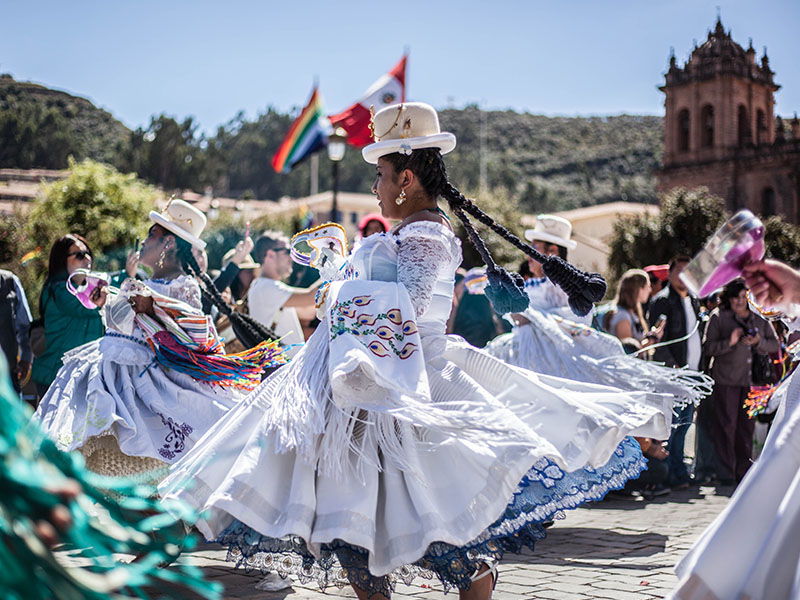
Like the ancient feast upon which it is modeled, today’s Inti Raymi festival honors a new cycle of life with several days of exulted dancing, drinking, and eating, with the main event on June 24. In a city that does not lack for festivals to fill the cultural calendar, Inti Raymi has become one of the largest and most important celebrations in Cusco, perhaps precisely because of its local significance.
More than 500 actors, organized by the university, professional, or neighborhood affiliation, prepare and practice for months beforehand, designing elaborate and ornate costumes, refining dance sequences, and coordinating minor details or the procession, all to give full homage to the Inca past.
Cusco Tours:
Our expert guide and Cusco-native, Fabricio Ortiz, explains the Inca heritage of Inti Raymi and what to expect on the main day of festivities.
On the day of Inti Raymi, the procession is staged at Coricancha, the Plaza de Armas , and Sacsayhuaman. These were the most important ceremonial sites in Inca times, and today they are among the few remaining examples of the Inca’s mastery of monumental stone architecture.
The starting point of the procession is Coricancha, the former “Temple of the Sun,” and the current site of Santo Domingo Church. It was here that the Inca civilization worshipped Inti, the Sun God, and this grandest of palaces was decked out accordingly. Inti Raymi begins at San Domingo Church, the site of Coricancha, the Inca Temple of the Sun. The darker-hued stone wall is the building’s most visible remnant of Inca architecture.
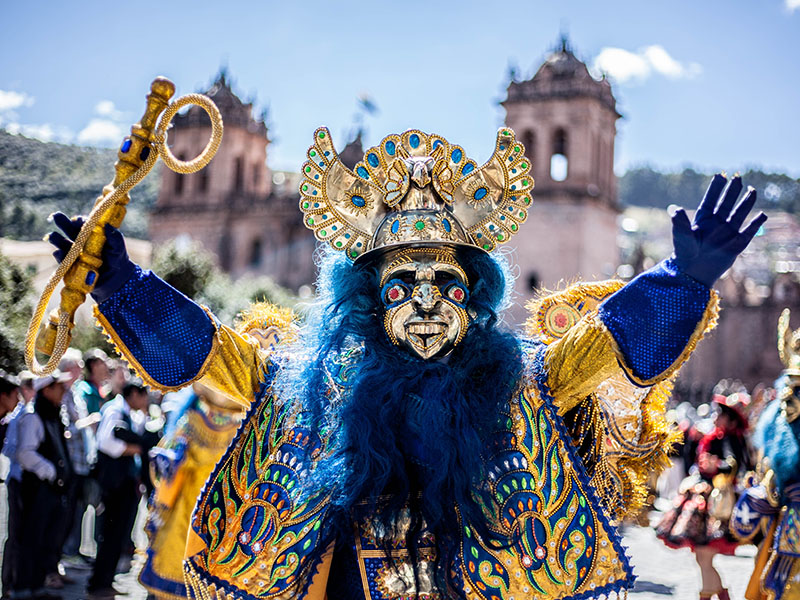 The chronicles of the conquest say that, when the Spanish first entered
Cusco, Coricancha was among the most incredible constructions that they
had ever encountered in the Americas. The walls of the temple were plated
in gold, and the gardens were littered with life-size reproductions of
Andean flora and fauna, including golden-fleeced llamas, tiny insects,
ears of corn, and the most delicate flowers, all crafted in gold and
silver. Aside from 4,000 attending priests, the most notable residents of
Coricancha were the deceased Incas, mummified and wrapped in beautiful
clothes and seated upon thrones of gold to rest until eternity.
The chronicles of the conquest say that, when the Spanish first entered
Cusco, Coricancha was among the most incredible constructions that they
had ever encountered in the Americas. The walls of the temple were plated
in gold, and the gardens were littered with life-size reproductions of
Andean flora and fauna, including golden-fleeced llamas, tiny insects,
ears of corn, and the most delicate flowers, all crafted in gold and
silver. Aside from 4,000 attending priests, the most notable residents of
Coricancha were the deceased Incas, mummified and wrapped in beautiful
clothes and seated upon thrones of gold to rest until eternity.
Of course, none of these wonders withstood the plundering thirst of conquering Spaniards, and all that remains are a series of Inca walls that were spared when construction started for the Spanish church that now towers over the original site. Coricancha is where the Inti Raymi procession starts every June 24, and people show up hours in advance to secure the best view.
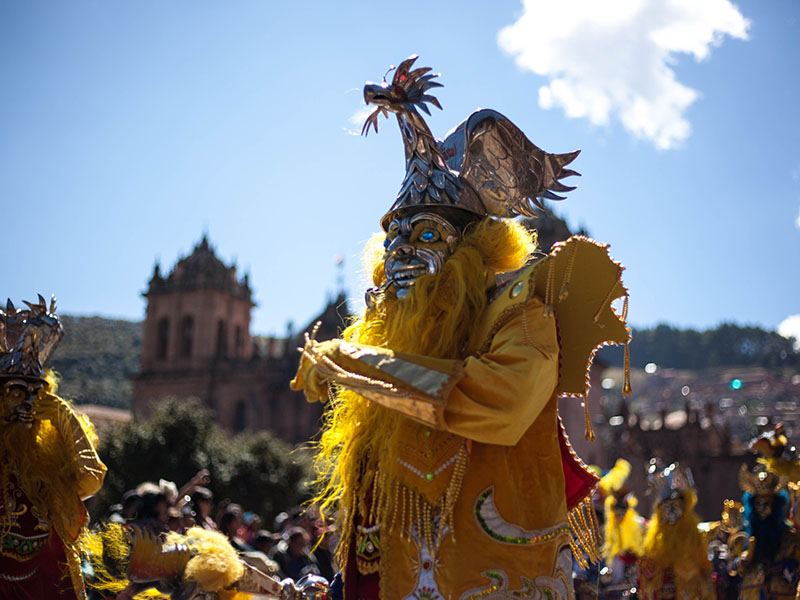
The procession continues on foot to the Plaza de Armas and then further up the hill to Sacsayhuaman, an expansive archaeological site where the remainder of the Inti Raymi rituals are performed to the delight of thousands of onlookers. The entire ceremony is conducted in the Quechua language .
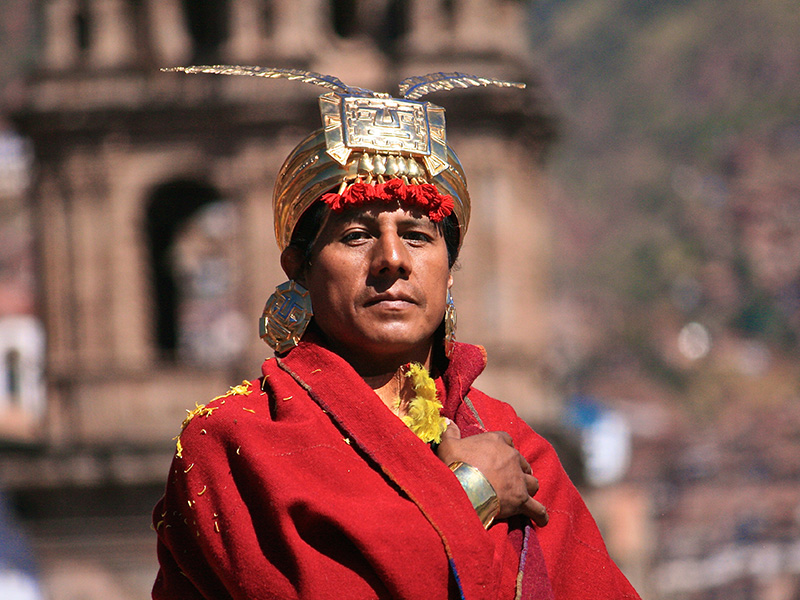
Indeed, as a ceremony in honor of Cusco’s glorious Inca history, Inti Raymi has no equal. At every instance, the pride of residents is palpable. Get in touch , and we can arrange for you to go to Inti Raymi in the company of a guide who can provide background information for a fuller understanding of the rituals as they are being carried out.
*Last Updated by Britt Fracolli, October 2019

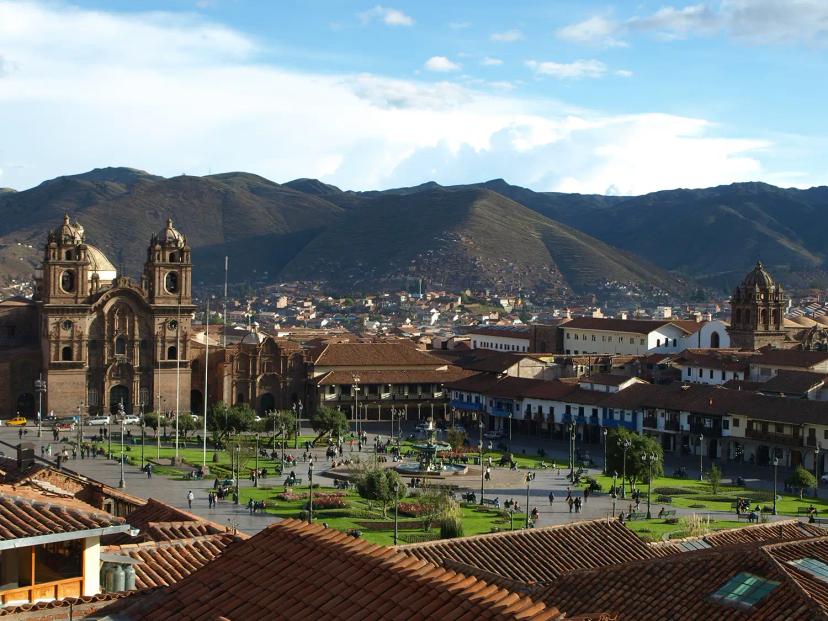

Email: [email protected]
Sign up to receive our newsletter for great articles, stunning photos, and special deals.